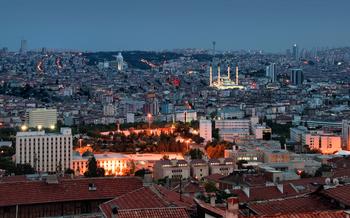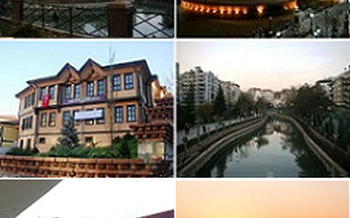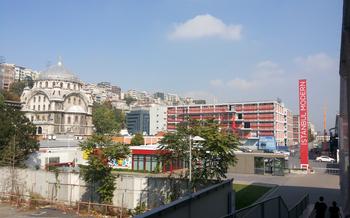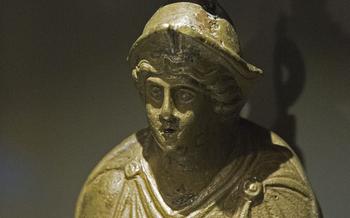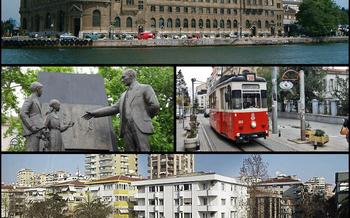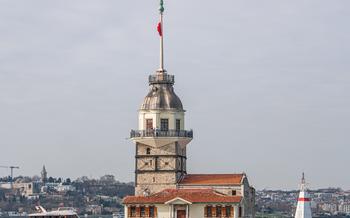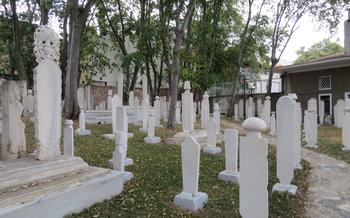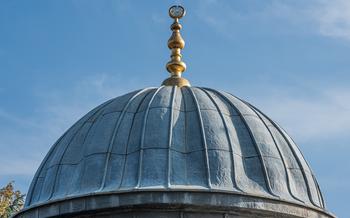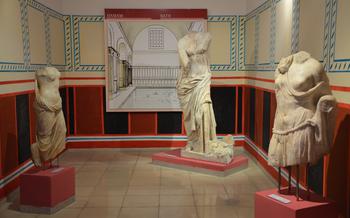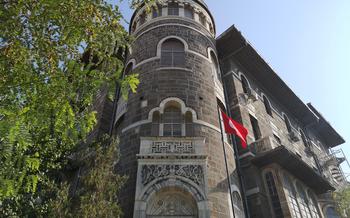
Kossuth House Museum
- The Kossuth House Museum: A Beacon of Hungarian History
- Location and Directions:
- Museum Collections
- Interactive Displays and Exhibits
- Guided Tours and Audio Guides
- Educational Programs and Workshops
- Temporary Exhibitions and Special Events
- Accessibility and Amenities
- Historical Context of the Hungarian Revolution
- Kossuth's Life and Legacy
- The Museum's Architecture and Design
- Research and Educational Resources
- Museum Etiquette and Guidelines
- Visitor Reviews and Testimonials
- Insider Tip: Unveiling Hidden Gems at the Kossuth House Museum
The Kossuth House Museum: A Beacon of Hungarian History
In the heart of Kütahya, Turkey, stands the Kossuth House Museum, a testament to the Hungarian Revolution of 1848-49 and the life of its prominent leader, Lajos Kossuth. This historical landmark offers a captivating journey through a pivotal chapter in Hungary's struggle for independence.
The museum's significance lies in its connection to Lajos Kossuth, who, as Governor-President of Hungary, played a crucial role in the revolution. Kossuth's tireless efforts to establish a republic and his passionate speeches ignited the flames of rebellion against the Habsburg rule. The museum stands as a symbol of his unwavering dedication to his homeland and the ideals of liberty and self-determination.
As a historical landmark, the Kossuth House Museum serves as a poignant reminder of the sacrifices and triumphs of the Hungarian people during the tumultuous events of 1848-4Its exhibits and artifacts provide a tangible link to the past, allowing visitors to immerse themselves in the story of Hungary's fight for freedom.
Location and Directions:
The Kossuth House Museum is situated in the heart of Kütahya, a city steeped in historical significance. Situated at [Exact Address], it is easily accessible by various modes of transportation. If you're arriving by car, there are ample parking options nearby.
For those traveling by public transport, the museum is conveniently located within walking distance from the [Name of Bus Stop or Train Station]. Numerous bus routes and tram lines connect the museum to different parts of the city.
Once you arrive in the vicinity, keep an eye out for the building's distinctive [Architectural Feature or Landmark], which serves as a prominent landmark. The museum's entrance is clearly marked and inviting, welcoming you to step inside and explore the fascinating world of Lajos Kossuth and the Hungarian Revolution.
Museum Collections
The Kossuth House Museum houses a treasure trove of exhibits and artifacts that provide a glimpse into the life and times of Lajos Kossuth and the Hungarian Revolution of 1848-4The museum's collection includes:
-
Documents: Original documents, letters, and manuscripts related to the revolution, including Kossuth's own writings, speeches, and correspondence. These documents offer a firsthand account of the events that unfolded during this tumultuous period in Hungarian history.
-
Personal Belongings: Kossuth's personal belongings, such as his clothing, furniture, and everyday items, provide a tangible connection to the man and his life. Visitors can see the desk at which he wrote his speeches, the bed in which he slept, and the clothes he wore as he led the revolution.
-
Memorabilia: A variety of memorabilia related to the revolution, including flags, banners, weapons, and uniforms, helps to recreate the atmosphere of this historic event. These artifacts bring to life the struggles and sacrifices made by the Hungarian people in their fight for independence.
The Kossuth House Museum's collection is not merely a collection of objects; it is a testament to the spirit of revolution and the indomitable will of the Hungarian people. Through these artifacts, visitors can gain a deeper understanding of the events that shaped Hungary's history and the legacy of Lajos Kossuth, a man who dedicated his life to the cause of Hungarian freedom.
Interactive Displays and Exhibits
The Kossuth House Museum captivates visitors with its innovative and engaging exhibits that bring the museum's stories to life. Interactive touchscreens and virtual reality experiences immerse visitors in the historical events and struggles of the Hungarian Revolution of 1848-4Through these interactive elements, visitors can explore key moments in Kossuth's life, witness the unfolding of the revolution, and gain a deeper understanding of the historical context.
Multimedia presentations and interactive displays enhance the visitor's appreciation of the museum's content. Visitors can watch historical reenactments, listen to audio recordings of Kossuth's speeches, and manipulate 3D models of the Kossuth House and other landmarks associated with the revolution. These interactive features provide a multisensory experience that engages visitors of all ages and learning styles.
The Kossuth House Museum's interactive exhibits and displays serve as a bridge between the past and the present, allowing visitors to connect with the historical figures and events that shaped Hungary's destiny. By immersing themselves in the museum's interactive experiences, visitors gain a deeper appreciation for the sacrifices made by Kossuth and his fellow revolutionaries and the lasting impact of the Hungarian Revolution on the course of European history.
Guided Tours and Audio Guides
Enhance your visit to the Kossuth House Museum with guided tours led by knowledgeable experts who bring the museum's stories to life. These tours offer personalized insights, historical context, and a deeper understanding of the museum's exhibits. Guided tours are available in various languages and can be booked in advance to secure your spot.
Audio guides are also available for self-guided tours, providing a convenient and informative way to explore the museum at your own pace. With audio guides, you can learn about the Kossuth family, the Hungarian Revolution, and the significance of the museum's collections. Whether you prefer a guided tour or an audio guide, these options enrich your visit and provide a more comprehensive experience of the Kossuth House Museum.
Educational Programs and Workshops
The Kossuth House Museum offers a diverse range of educational programs and workshops designed to engage visitors of all ages in the history of the Hungarian Revolution and the life of Lajos Kossuth. These programs are specifically tailored to cater to the needs of students, families, and groups seeking an interactive and immersive learning experience.
One of the highlights of the museum's educational offerings is the history workshop, which allows participants to delve into the intricacies of the Hungarian Revolution through hands-on activities and discussions. Led by knowledgeable educators, these workshops provide a deeper understanding of the political, social, and cultural factors that shaped this transformative period in Hungary's history.
Interactive storytelling sessions bring the museum's exhibits to life, as skilled storytellers captivate audiences with tales of courage, sacrifice, and resilience during the revolution. These sessions are particularly popular with younger visitors, who are drawn into the compelling narratives and gain a deeper appreciation for the historical events being depicted.
The museum also organizes hands-on experiences that allow visitors to interact directly with historical artifacts and replicas. These activities, such as handling replica weapons or trying on period clothing, provide a tangible connection to the past and help visitors develop a more personal understanding of the revolution's impact on the lives of ordinary people.
Through these educational programs and workshops, the Kossuth House Museum plays a vital role in promoting historical learning and engagement, ensuring that the legacy of the Hungarian Revolution and the contributions of Lajos Kossuth continue to inspire and educate future generations.
Temporary Exhibitions and Special Events
The Kossuth House Museum hosts a variety of temporary exhibitions and special events throughout the year, offering visitors a chance to delve deeper into specific aspects of Hungarian history and culture. These events showcase unique artifacts, feature guest speakers and experts, and provide an immersive experience that brings the museum's collections to life.
Temporary exhibitions often focus on specific themes or periods related to the Hungarian Revolution of 1848-49, showcasing rare documents, personal belongings, and artworks that shed light on the events and individuals that shaped this pivotal moment in Hungary's history. These exhibitions provide visitors with a more comprehensive understanding of the revolution and its lasting impact.
Special events at the museum include lectures, workshops, film screenings, and historical reenactments that bring the past to life in a captivating way. These events are often held in collaboration with historians, scholars, and cultural organizations, offering visitors the opportunity to engage with experts in the field and gain a deeper appreciation for Hungarian history.
Attending a temporary exhibition or special event at the Kossuth House Museum is a great way to enhance your visit and gain a unique perspective on the museum's collections. Be sure to check the museum's website or social media pages for upcoming events and plan your visit accordingly.
Accessibility and Amenities
The Kossuth House Museum is committed to providing an inclusive and accessible experience for all visitors. Wheelchair ramps and elevators ensure that visitors with mobility challenges can navigate the museum with ease. Accessible restrooms are also available throughout the premises.
For a more comfortable and enjoyable visit, the museum offers a range of amenities. A well-stocked gift shop offers a variety of souvenirs and educational materials related to the Hungarian Revolution and Lajos Kossuth. A cozy café provides a welcoming space for visitors to relax and enjoy refreshments while reflecting on the museum's exhibits. Additionally, a cloakroom is available for visitors to store their belongings securely during their visit.
Historical Context of the Hungarian Revolution
The Hungarian Revolution of 1848-49, also known as the Hungarian War of Independence, was a pivotal moment in Hungarian history. It was a national uprising against the rule of the Austrian Empire, which had dominated Hungary for centuries. The revolution was sparked by a combination of political, economic, and social grievances, including the lack of autonomy for Hungary within the empire, the imposition of German as the official language, and the suppression of Hungarian culture.
The revolution was led by a group of Hungarian patriots, including Lajos Kossuth, who emerged as the most prominent figure of the movement. Kossuth, a brilliant orator and charismatic leader, rallied the Hungarian people to fight for their independence. The revolution quickly spread throughout Hungary, and the Hungarian army, led by General Artúr Görgey, achieved significant victories against the Austrian forces.
The Hungarian Revolution was not only a struggle for national independence but also a fight for democratic ideals. The revolutionaries sought to establish a constitutional monarchy and a more just and equitable society. The revolution had a profound impact on Hungary and on the course of European history. It inspired other revolutions across Europe, and its legacy continues to shape Hungary's identity and its struggle for freedom and democracy.
Kossuth's Life and Legacy
Lajos Kossuth, a pivotal figure in the Hungarian Revolution, was born in 1802 and became a prominent lawyer and politician. His oratorical skills and unwavering dedication to Hungary's independence made him a charismatic leader during the tumultuous events of 1848-4
Kossuth's political career began in the 1830s, where he advocated for reforms and constitutional rights. His fiery speeches and writings earned him the title "Father of the Nation," and he became a symbol of resistance against Habsburg rule.
As the revolution unfolded, Kossuth emerged as the leader of the Hungarian National Committee and served as the first Prime Minister of the newly declared Hungarian Republic. His diplomatic efforts sought international support for Hungary's cause, but despite his efforts, the Hungarian Revolution ultimately faced defeat.
Kossuth lived in exile after the revolution failed, continuing to advocate for Hungary's independence and self-determination. He became a respected figure on the international stage, representing the Hungarian cause in various countries.
Kossuth's legacy extends beyond his role in the revolution. He is remembered as a visionary statesman, a gifted orator, and a relentless advocate for Hungarian independence. His influence on Hungarian history and politics continues to this day, as he remains a symbol of national pride and resilience.
The Museum's Architecture and Design
The Kossuth House Museum is housed in a historic building that was once the home of Lajos Kossuth, a prominent figure in the Hungarian Revolution of 1848-4The building itself is a testament to the architectural style of the mid-19th century, featuring a blend of Neoclassical and Romantic elements. The exterior façade is adorned with intricate carvings, decorative moldings, and wrought-iron balconies that give it a distinctive character.
Inside, the museum's layout is designed to showcase the life and times of Kossuth and the Hungarian Revolution. The rooms have been carefully restored to their original appearance, with period furniture, artwork, and personal belongings that offer visitors a glimpse into Kossuth's life and the historical events that shaped his legacy. The museum also incorporates modern design elements, such as interactive multimedia displays and touchscreens, which complement the historical exhibits and provide a more engaging experience for visitors.
The museum's architecture and design play a crucial role in creating a unique atmosphere that transports visitors back in time. The meticulously preserved interiors, coupled with the modern interactive elements, provide a comprehensive and immersive experience that enhances the visitor's understanding of Kossuth's life and the Hungarian Revolution.
Research and Educational Resources
The Kossuth House Museum houses a treasure trove of historical documents, manuscripts, and other resources that provide valuable insights into the Hungarian Revolution of 1848-49 and the life of Lajos Kossuth. The museum's library and archives are a haven for researchers, scholars, and history enthusiasts seeking to delve deeper into this pivotal period.
The library boasts an extensive collection of books, journals, and periodicals related to the revolution, Kossuth, and Hungarian history. These resources offer a wealth of information on the political, social, and cultural aspects of this transformative era. The museum's archives, on the other hand, house a vast array of primary sources, including original documents, letters, and personal papers that shed light on the inner workings of the revolution and the key players involved.
The museum's research facilities are designed to facilitate scholarly inquiry and promote historical understanding. Researchers have access to dedicated study spaces, computers, and specialized equipment to aid their research endeavors. The museum's knowledgeable staff is also available to provide assistance and guidance to visitors, ensuring a productive and rewarding research experience.
The Kossuth House Museum's commitment to research and education extends beyond its physical space. The museum regularly hosts seminars, workshops, and conferences that bring together scholars, experts, and the public to discuss various aspects of Hungarian history and the revolution. These events provide a platform for knowledge sharing, intellectual exchange, and the dissemination of new research findings.
Whether you are a seasoned researcher, a student, or simply someone with a keen interest in history, the Kossuth House Museum offers a wealth of resources and opportunities to explore the rich history of the Hungarian Revolution and the life of Lajos Kossuth.
Museum Etiquette and Guidelines
The Kossuth House Museum, like any other cultural institution, has established a set of guidelines to ensure a safe and enjoyable experience for all visitors. It is essential to be respectful of these rules and regulations to maintain the integrity of the museum and its collections.
Photography is generally allowed in the museum, but using a flash or tripod is prohibited to prevent damage to the artifacts. Visitors are kindly requested to keep noise levels to a minimum and refrain from touching or handling any exhibits unless explicitly permitted.
To preserve the museum's collection for future generations, eating, drinking, and smoking are strictly prohibited within the exhibition spaces. It is important to note that the museum may have specific rules regarding the use of bags or backpacks, which visitors must adhere to.
By following these guidelines, visitors can contribute to the preservation of the Kossuth House Museum and its collections while ensuring a positive and enriching experience for themselves and others.
Visitor Reviews and Testimonials
The Kossuth House Museum has received glowing reviews from visitors worldwide, praising its informative exhibits, knowledgeable staff, and immersive atmosphere. Here are a few excerpts from visitor testimonials that highlight their experiences:
"The Kossuth House Museum was a fantastic journey through history. The exhibits were interactive and engaging, and the staff was incredibly knowledgeable and passionate about the museum's collection. I highly recommend a visit to anyone interested in Hungarian history or the Hungarian Revolution." - Emma K.
"I was blown away by the museum's collection of artifacts and documents related to Lajos Kossuth and the Hungarian Revolution. The multimedia presentations and virtual reality experiences brought the history to life and made it feel like I was there. It's a must-see for anyone interested in this period of history." - Mark B.
"My family and I had a wonderful time at the Kossuth House Museum. The guided tour was informative and engaging, and our guide provided fascinating insights into the life of Kossuth and the revolution. The kids particularly loved the interactive exhibits and the hands-on activities. It was a great way to learn about Hungarian history in a fun and interactive way." - Sarah W.
These positive reviews reflect the museum's commitment to providing visitors with a memorable and enriching experience. The Kossuth House Museum continues to receive praise for its dedication to preserving and showcasing the history of the Hungarian Revolution.
Insider Tip: Unveiling Hidden Gems at the Kossuth House Museum
Beyond the main exhibition halls, the Kossuth House Museum holds hidden gems waiting to be discovered by curious visitors. Explore the museum's courtyard to find a serene garden adorned with statues and offering a tranquil retreat from the bustling city. Don't miss the tucked-away room housing a collection of personal letters and diaries that provide intimate insights into Kossuth's life and thoughts. For those seeking a deeper dive, inquire about accessing the museum's archives, where you can delve into historical documents and manuscripts that bring the past to life. Remember, sometimes the most remarkable treasures are found off the beaten path, so keep your eyes peeled for these hidden gems during your visit to the Kossuth House Museum.
